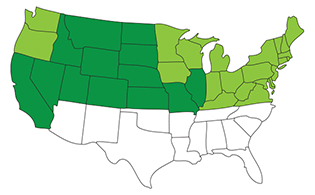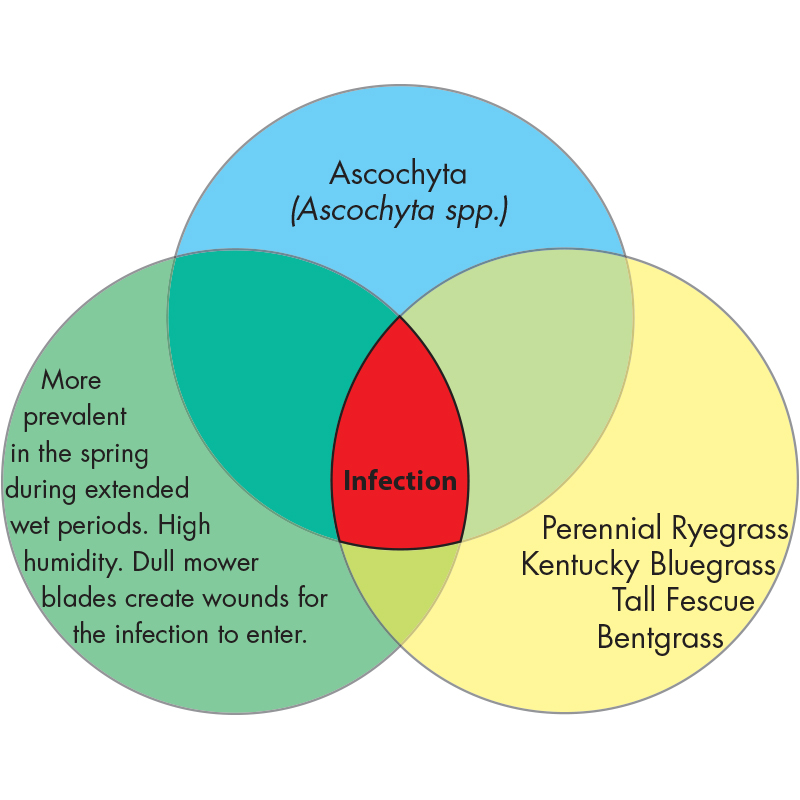
Ascochyta
Ascochyta spp.
Ascochyta is a lawn disease that spreads rapidly, leaving large areas of bleached, blighted grass in its wake. Ascochyta attacks several different types of grass across the northern United States with most damage occurring during the summer.
Identify

Foliar
Signs of Ascochyta infection include large, uniform areas of straw-colored grass and some instances of patchy pockets in the lawn or landscaping. Upon closer inspection, you'll see healthy grass leaves and infected grass leaves intermixed. Death occurs in leaf blades from the tips downward, with the bleached area extending toward the leaf base. The margin between the diseased tissue and healthy tissue develops an abrupt, pinched appearance. This lawn disease can resemble Dollar Spot but lacks the hourglass-shaped lesions on the grass blade. The symptoms normally start at the tip of the grass blades.
Life Cycle
An Ascochyta infection can occur only if all of the following conditions are present: 1. Pathogen: Ascochyta spp. lawn fungus 2. Host: Bentgrasses, Fescues, Kentucky Bluegrass or Perennial Ryegrass 3. Environment: Cooler climates with high humidity—often occurs during wet spells in the springtime

Control
Because you can't change your environment, the best way to control Ascochyta is to create conditions that will foster a healthy lawn. Not only will this make your lawn unfavorable for Ascochyta growth, but it will also lower your risk of extensive damage should the lawn disease develop—plus you'll have the type of lawn you'll want to live on. For Ascochyta control and lawn fungus treatment, TruGreen® recommends the following cultural control tips: • Aerate the lawn to reduce thatch levels • Keep the grass mowed at 2 ½ to 3 inches, and keep the mower blades sharp • Water in the morning and as infrequently as possible, but maintain adequate moisture—this will allow the leaf blades to dry more quickly • Avoid excessive applications of fertilizers with high levels of nitrogen
Diagram





Facebook
X
Youtube
Copy Link
Email